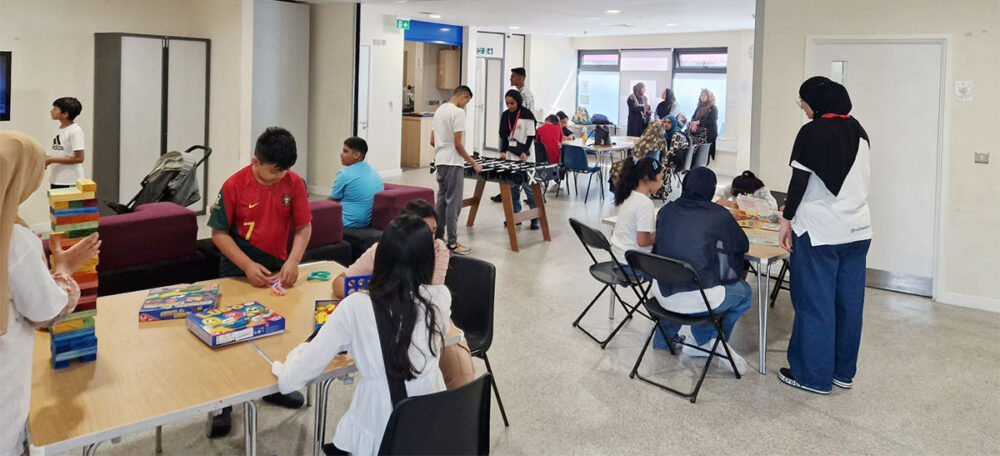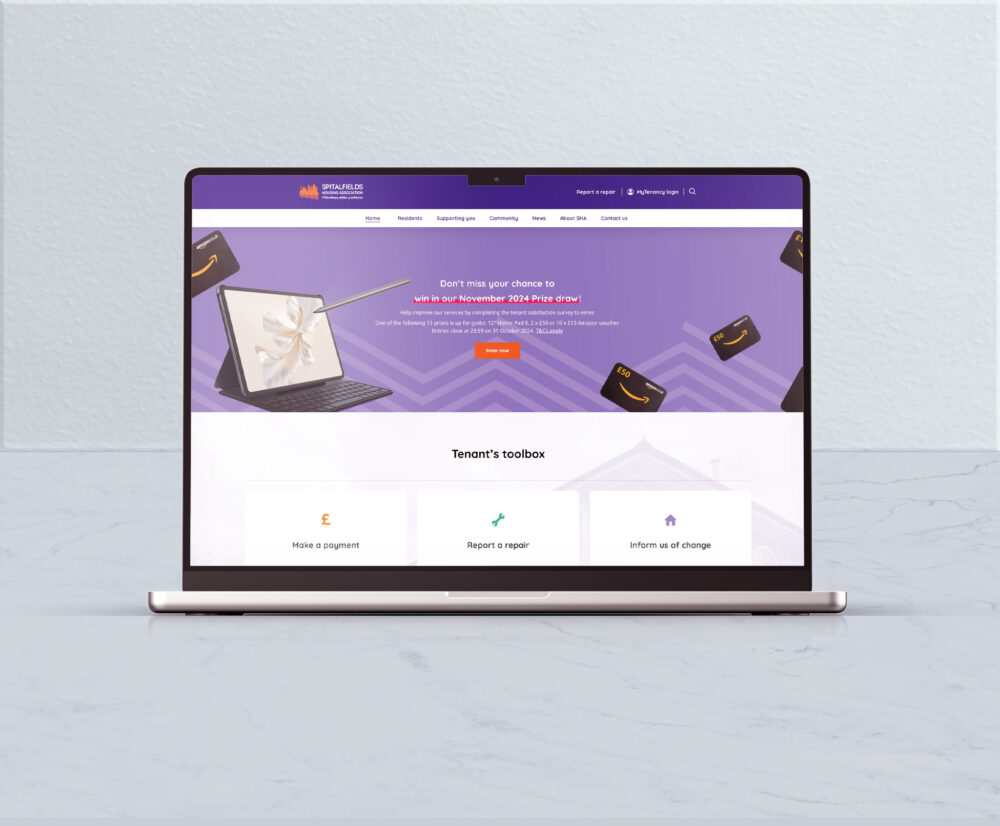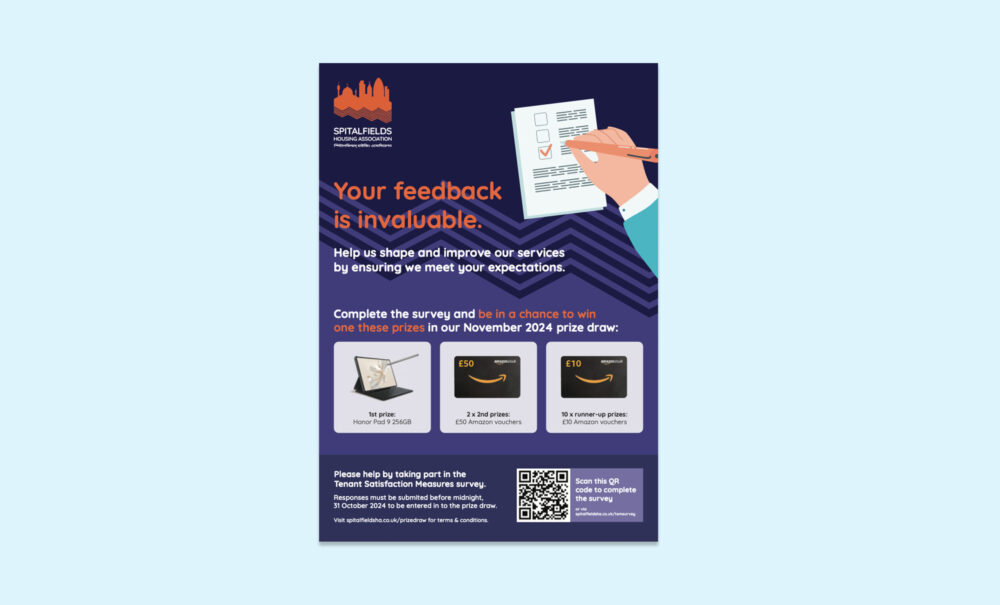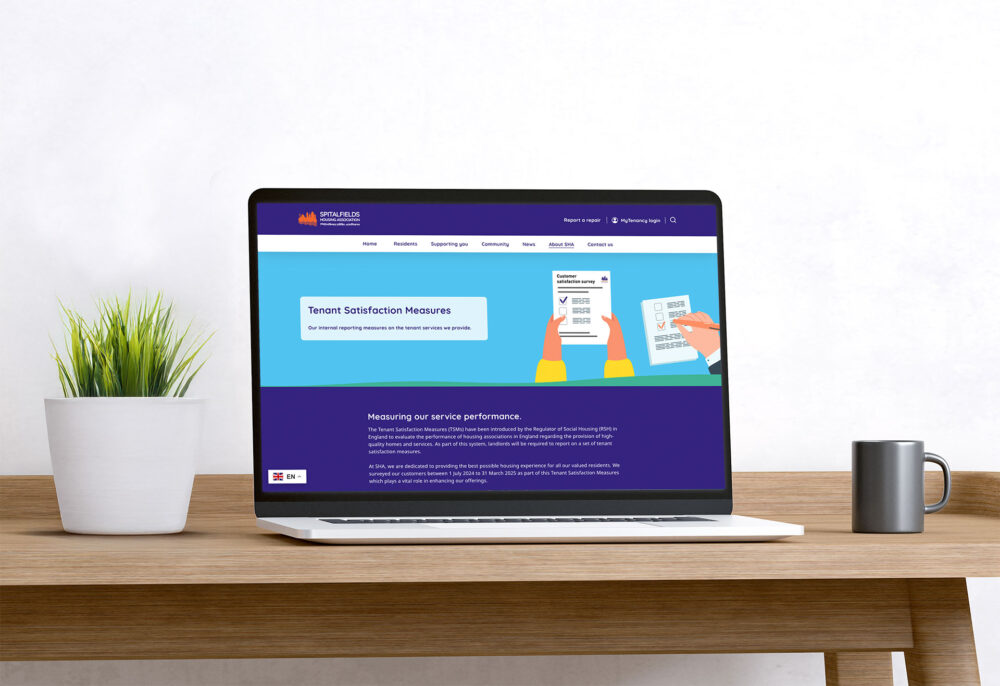Our recent collaboration with Spitalfields Housing Association (SHA) is a prime example of how targeted support can drive results in tenant satisfaction measurement—something vital for both regulatory compliance and genuine community improvement.
The challenge in enhancing tenant engagement and feedback
For smaller housing associations like SHA, gathering robust tenant feedback can be particularly challenging. Limited resources and competing priorities often make it difficult to achieve the high response rates required for reliable insights. Previous attempts to gather tenant information or conduct surveys have not yielded significant response rates, and contracting external research agencies can be costly. SHA sought to not only meet regulatory standards but also to genuinely listen to and act upon tenant voices, and work hard to encourage a responsive mindset where tenants are more proactive in responding to communications. SHA ultimately commissioned LUV to help them achieve their survey response objectives and deliver better value for money, including avoiding the need to contract a research agency, while also maximising staff learning opportunities.
Designing a multi-channel campaign
Working closely with SHA, LUV designed and implemented a comprehensive campaign to maximise participation and data quality. We began by carefully monitoring response rates, setting ambitious targets to exceed the requirements set by the Regulator of Social Housing (RSH). To ensure accessibility, we helped SHA host the survey prominently on their website, optimising it for both desktop and mobile users. We maintained transparency regarding the calculated figures and provided guidance on the rules for data collection, including the GDPR and methods to prevent data bias.
To further boost engagement, we proposed a prize draw for survey respondents—a proven incentive that encourages greater participation, which they aren’t used to. Our campaign also included eye-catching posters with QR code links, SMS reminders, and regular communications via newsletters and community noticeboards. This multi-channel strategy ensured that tenants were aware of the survey and felt motivated to participate, with the possibility of winning a prize. More importantly, it also raises the bar for them to be more responsive in future surveys and campaigns.
Throughout the process, we also prioritised transparency and data security, reassuring tenants that their feedback is handled confidentially and used to drive real improvements.
Empowering staff through knowledge transfer
A core part of our support involved empowering SHA’s staff team through upskilling. We provided hands-on guidance throughout the survey process, from initial planning to implementation and analysis. By sharing best practices and practical tools, we enabled SHA’s team to confidently manage the campaign and understand the importance of each step.
Our approach included training workshops and regular check-ins, ensuring that staff were well-versed in promoting the survey and encouraging participation. We also assisted them in generating any additional campaign assets they required. This collaboration not only boosted staff confidence but also fostered a sense of ownership and commitment to the project.
By involving staff in the process, we helped SHA build internal capacity for future tenant engagement initiatives. The team gained valuable experience in survey design, data collection, and analysis—skills that will continue to benefit the organisation long after the campaign ends.
Actionable insights and results
Thanks to this coordinated approach, SHA achieved a robust 44.6% response rate, ensuring their survey data was both representative and actionable. The results provided valuable insights into tenant satisfaction, highlighting key areas for improvement, such as repairs and complaint handling, both of which are crucial for overall tenant happiness.
By publishing the survey outcomes on the website and engaging further with stakeholders to communicate planned improvements, SHA is building greater trust and transparency with its tenants, reinforcing its commitment to continuous improvement.
Why this matters for small and medium housing associations
Small and medium housing associations often face unique challenges in delivering effective tenant satisfaction strategies. Limited resources and a lower profile can make it harder to achieve meaningful engagement. However, as demonstrated by our work with SHA, a structured, multi-channel approach—supported by the right expertise—can deliver outstanding results.
How LUV can help other housing associations
At LUV, we specialise in helping housing associations of all sizes, including designing and implementing effective tenant satisfaction surveys. Our expertise extends into creative design and digital solutions (including print, websites and film), so we can provide holistic support for the campaign with all assets under one roof. We also offer ongoing strategic support to help you analyse feedback, identify key drivers of satisfaction, and implement meaningful improvements.
If you are a small or medium housing association looking to strengthen your tenant satisfaction measurement or require creative help to drive positive change in your communities, please reach out to us at LUV.





